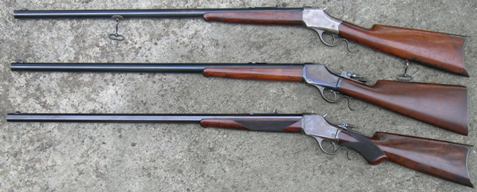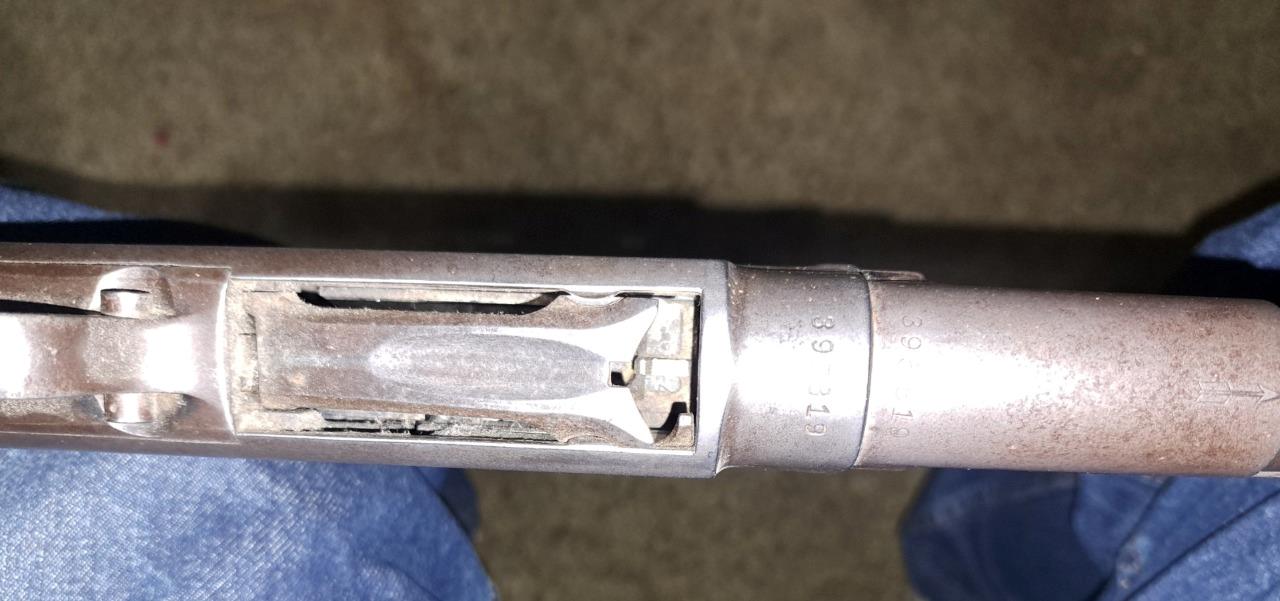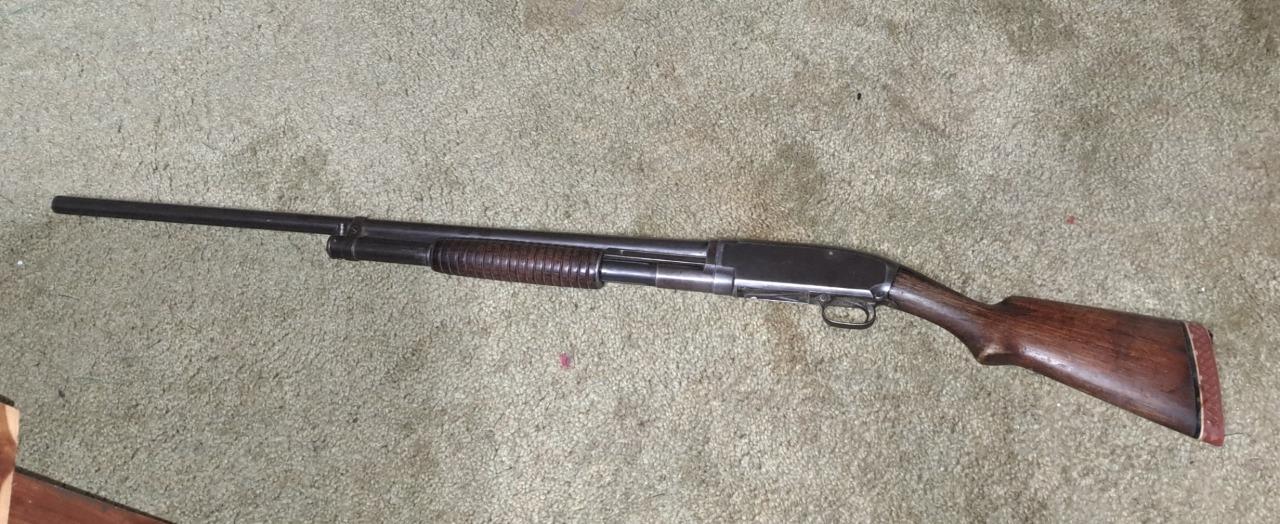April 15, 2005
 Offline
OfflineNate2978 said
Bert H. said
Pictures received, and that gun has positively been reblued/refinished.
What year did they change the buttstock?
What specific change are you referring to? During the course of the 52-year production run, Winchester made numerous changes to the butt stocks.
WACA Historian & Board of Director Member #6571L

June 9, 2024
 Offline
OfflineBert H. said
Nate2978 said
Bert H. said
Pictures received, and that gun has positively been reblued/refinished.
What year did they change the buttstock?
What specific change are you referring to? During the course of the 52-year production run, Winchester made numerous changes to the butt stocks.
My apologies, the two i have that you posted the pictures of, they have different buttstocks. Was wondering if you knew when they changed them
June 9, 2024
 Offline
OfflineBert
this past weekend i was shooting some clays and a relative had several mod 12 that he was using. I took notice to one he said was mfr in 1932 and it had several areas that were the same bronze color as mine, the one I had sent you pictures of. Can you say more about your original statement that the bluing tanks were the wrong temp, I would like to look into this further
April 15, 2005
 Offline
OfflineNate2978 said
Bert
this past weekend i was shooting some clays and a relative had several mod 12 that he was using. I took notice to one he said was mfr in 1932 and it had several areas that were the same bronze color as mine, the one I had sent you pictures of. Can you say more about your original statement that the bluing tanks were the wrong temp, I would like to look into this further
Nate,
Winchester used Nickel Steel alloy barrels on the Model 1912 (12) up to the year 1932. The Nickel Steel barrels were all “rust” blued by Winchester versus hot salt blued. When a Nickel Steel barrel is refinished (in the aftermarket) using hot salt bluing, the temperature is quite often not properly controlled, resulting in the newly applied bluing being an “off” color. That is one of the more noticeable visual clues that an old Winchester has been refinished by somebody other than the factory.
Bert
WACA Historian & Board of Director Member #6571L

April 15, 2005
 Offline
OfflineEpicGarageSale said
recently inherited a model 12 12 gauge sn 395819 which i know nothing about any info regarding age, grade etc. would be appreciated.


Your Model 12 was manufactured in April 1924. It is a standard (Field) grade gun in hard used (worn) condition. The recoil pad is an aftermarket alteration.
Bert
WACA Historian & Board of Director Member #6571L

December 25, 2016
 Offline
OfflinePurple. Seems that is the most common off color I see on refinished M12’s. I don’t know what the relationship is to the incorrect temperature of the hot salt solution. We did black oxide in the manufacturing facility I worked at many years ago. The property it is on can’t be resold or redeveloped due to the improper disposal of that bluing solution. It is especially nasty stuff.
January 20, 2023
 Offline
OfflineApparently, it doesn’t take much for the finished color of a hot salts blue job to vary significantly from the hoped-for blue-black. Those of age in 1964 may recall the uproar when some of the early “improved” Winchester Model 70 receivers came out of the box with a purple cast, as did some early Weatherby Mark V receivers.
At least in the case of the Mark Vs, Sauer was attempting to use the investment casting process and the culprit, according to the late Bill Ruger [who would know, if anyone did], was the unanticipated effect of a certain mold release agent. Sauer gave up on investment casting and started milling the Mark V receivers.
I don’t know whether Winchester tried to investment cast 1964 Model 70 receivers or not — Ruger said WRA did — but we know they made some Model 94 receivers using the sintering (heat/pressure-liquified powdered metal) process, which had to be black chromed. There’s nothing imprecise or structurally inferior about sintered steel parts, assuming proper heat treatment, as Colt’s proved to its own satisfaction, if nobody else’s, but cosmetically the idea was a marketing disaster for Winchester. [As an aside, there’s nothing “cheap” about setting up for making sintered parts. The initial equipment costs are horrendous.]
- Bill
WACA # 65205; life member, NRA; member, TGCA; member, TSRA; amateur preservationist
"I have seen wicked men and fools, a great many of both, and I believe they both get paid in the end, but the fools first." -- David Balfour, narrator and protagonist of the novel, Kidnapped, by Robert Louis Stevenson.
April 15, 2005
 Offline
OfflineRick Lindquist said
Purple. Seems that is the most common off color I see on refinished M12’s. I don’t know what the relationship is to the incorrect temperature of the hot salt solution. We did black oxide in the manufacturing facility I worked at many years ago. The property it is on can’t be resold or redeveloped due to the improper disposal of that bluing solution. It is especially nasty stuff.
The older Nickel Steel barrels almost always take on a purple tint when reblued with modern hot salt immersion bluing. Winchester rust blued all of the Nickel Steel barrels.
Bert
WACA Historian & Board of Director Member #6571L

December 25, 2016
 Offline
OfflineMold release agents, Ughh. That pretty shine we see on a newly manufactured molded item? At least some of it is mold release agent. Much more efficient to make it part of the molding process such that it enhances the appearance, with no need to clean release agent off the newly molded parts. We need to be aware when using adhesives, mold release will ruin bond strength. Give plastics a good solvent scrub prior to greatly enhance the bond.
1 Guest(s)


 Log In
Log In












